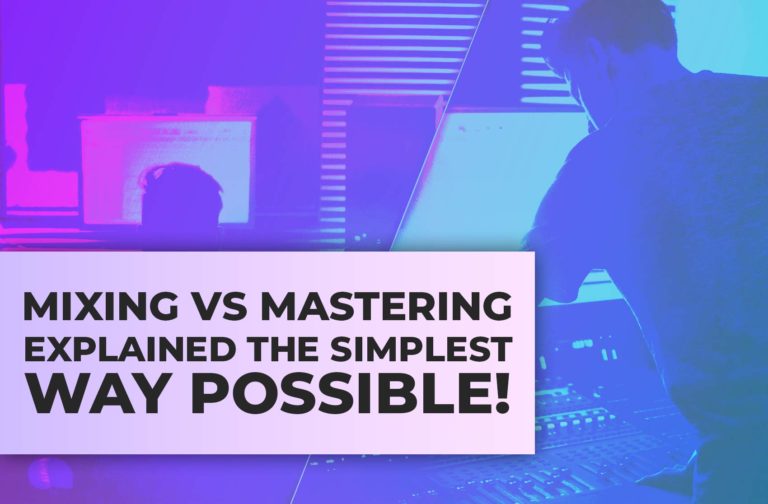Are your drums sounding flat or a bit lifeless? Have no fear. Today I’m going to run you through a few simple tricks and techniques that should get your drums hitting in all the sweet spots.
You’ve probably come across some citations where your song is arranged to perfection, yet your mix doesn’t quite get any feet tapping or heads nodding. This issue is generally due to a lack of dynamic, punch, and space around the drums.
Whether using samples or live drums sounds, you can create depth and color for your drums with just a few basic production tricks. Mixing drums shouldn’t be an overly complex process. However, if you’re not familiar with at least a few of the steps below there’s a good chance your drum mixes need some attention.
You can use these techniques across a variety of genres. I’ve mainly implemented them while recording bands, making hip-hop beats, or mixing dance styles such as house or techno.
Things To Check Before Mixing
Before we move on to the mixing tips, I would advise that you check a few essentials regarding the drum samples in your session. Make sure that you check the following:
- Have my drums been recorded in a quiet and soundproofed environment with correct mic placement?
- If you’re using a sample, does it have a clean and uninterrupted signal when played back on its own?
- Does each drum part have its own individual track for treatment?
Step #1: Make Sure That You Gain Stage Your Mix Correctly

Gain staging refers to ensuring that each element of your mix is at a reasonable level before you do any processing or tweaking. More often than not, mixing issues can be solved with a simple volume adjustment in the right places.
With most singular instruments (guitar, piano, vocals) the idea is to fit one element into a mix, but with drums, there are a few elements that need to be mixed to sound like one cohesive unit.
Solo all your drum tracks and bring all of their volume levels down to complete silence. Then select each track and bring them up to a good mix level one by one. I usually start with the kick and snare as these often provide the backbone for your song’s groove.
Once you’ve brought up the backbeat elements, introduce the smaller or less frequent parts of your drums. This could be the hit-hats, toms, or auxiliary drum parts such as a woodblock or cowbell.
If you’re gain staging for a live drum kit, be sure to only introduce any room mics or overheads once you’ve placed the drum mics (i.e. the snare mics, kick mic, etc). Adding these mics at the end of your gain staging is easier on the ear and will provide you with sufficient information to give drums adequate space and air.
Step #2: Use Sidechain To Make Space For The Kick

If you’re a fan of or are trying to produce electronic styles of music such as trap, EDM or house then it’s crucial to understand the ins and outs of sidechaining.
Sidechaining creates room for one instrument by lowering the level of another that may be clashing with it in the mix. Often we find that drums can get lost under other punchy instruments such as synths, guitars, or even vocals.
You can bring your kick forward in the mix by sidechaining it to other low-end instruments. For instance, you can sidechain your bass synth or 808 to your kick so they don’t conflict when played together.
Place a compressor on the track of your bass or low-end instrument. The compressor should have a sidechain option with a dropdown menu that lets you select the audio input. Select the kick as your input so that it triggers the compressor.
Use your ear to adjust the attack and release parameters so that your kick breathes with the bass that you’re compressing. You can also adjust the threshold to determine how deep you want the compressor to cut into the bass signal.
If done correctly, it should sound as though the bass is temporarily vacuumed from the mix when the kick plays – and then comes back in as the tail of the kick dies out. Tight sidechaining will not only enhance your kick but give your bass tracks some serious added pocket and groove.
Step #3: Decrease Other Elements’ High End To Make Space For The Drums

Hi-Hats and snares are responsible for the top end of your rhythm, and they need to complement the kick to generate a good groove. However, these drum parts can also be muddied up when mixed alongside other top-heavy instruments such as synths, guitars, or other high-pitched samples.
If your mix is sounding too busy or messy in the top end, try to take out some of the high frequencies from your melodic elements. Do this before treating your drum parts to avoid any redundant processing that may do more harm than good.
Synths, brass, and guitars are generally more present in the mid-range. Try introducing a low pass filter on the eq of these instruments that cut at about 15-20k. There’s sometimes a lot of unnecessary noise in this region that will muddy up your cymbals, hats, and snare.
Step #4: Boost The Drums’ High End

In contrast, you can also enhance the top end of some of your drum tracks to bring them up in the mix. Using eq in this fashion can save you from having to do any tricky volume boosts or compression that can overload your mix instead of cleaning it up.
As mentioned earlier, snares, cymbals, and hi-hats need a clear top-end for maximum presence.
Likewise, kicks and toms can also be tweaked in the high end to bring them up in the mix:
- Add a notch to your kick at around 5k to add some click to the top end.
- Boost your cymbals between 8-10k to give them extra sparkle.
- Your snare can have its snap enhanced by boosting at around 5-7k
- You can tweak the top end of your toms between 5-10k depending on your tom size and their overall velocity. This region is responsible for its punchiness.
Step #5: Use Special Effects (Saturation & Distortion & Compression)

Once you’ve covered the basics of treating your drum tracks with gain staging and eq you can move on to other effects that add a more personalized flavor to your drum sounds.
Effects are an excellent way to dehumanize your drums in a way that gives them your own unique character. I’ve listed a few widely used effects tricks that a lot of producers use when trying to color their drum mixes:
Compression is the go-to tool for most engineers when trying to add some dynamic punch to your drum sounds. There are different types of compressors (from multiband, glue, and OTT) that each does the same job in a slightly different way.
Before you add any other effects on your drum tracks, use compression to help each drum element pop through the mix at the right time, and also disappear accordingly. Compression is vital for making your drums sound like they breathe, and knowing how to use it correctly is crucial for your drum mixes.
Saturators bring out extra color from your drums that may not necessarily occur naturally. This effect enhances any harmonics that your drums create and increases their value. This results in a richer drum sound, and this effect is a lifesaver when dealing with a clean mix that may just need some overall sparkle.
In the same vein, distortion can be used to give your drums some added grit and punchiness. Distortion increases the amplitude of a signal without changing the loudness. Adding distortion to elements such as the snares and kick will enhance their punchiness and add some textures that can’t be introduced organically.
Reverb is a phenomenal gluing effect for your drums. You can make all your drum samples sound as if they’re in the same room by placing your drum tracks in a group or bus and then introducing reverb to that bus.
The idea behind this technique is to create the idea that all your parts are being heard in the same space, and thus sound as one collective instrument.
Final Thoughts
For many producers and engineers, mixing drums is one of the most fun and rewarding parts of the production process. It may take some time and practice, but once your ear and brain have a firm grasp on how to make your drums hit harder, your mixes will improve ten-fold.
It’s important to remember that these are not the only techniques you can use to get the best out of your drum mixes. If you’d like to find more mixing and production tips check out our list of 14 Tips You Can Use Today That Will Improve Your Bets Forever. Until the next time, happy mixing!







